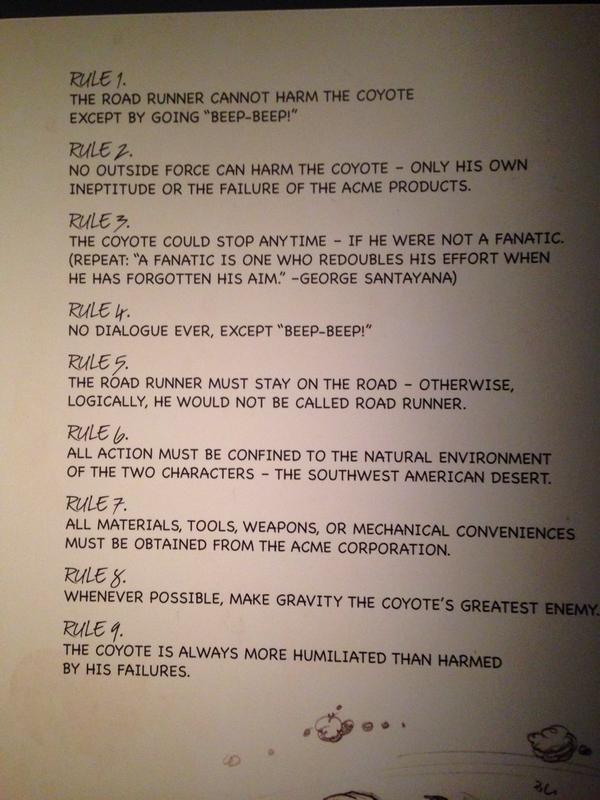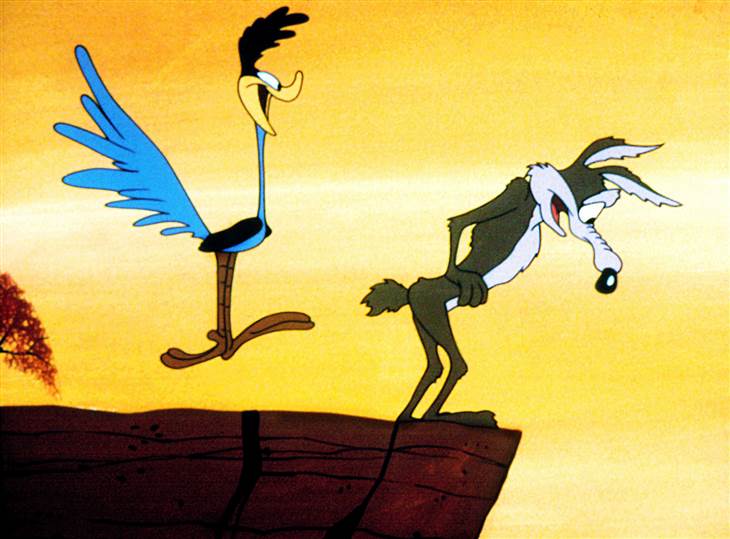Google the keywords “art” and “limits” (or “boundaries”) and you will find thousands of results with titles like “art without limits” or “art without boundaries.” Without dissecting any of them in particular, the general idea strikes me as a fantasy. Art cannot exist without limits: the limitations of particular media, the limitations of the artist’s vision, the limitations of space and time. We always work within limits, and often those creators who are most deliberate about setting limitations for themselves produce some of the most profound and unusual works. One could name minimalists like Samuel Beckett, or Lars Van Trier, or Erik Satie. Or Chuck Jones, American animator of such classic Warner Brother’s characters as Bugs Bunny, Daffy Duck, Porky Pig, and, of course, the Road Runner and Wile E. Coyote. Hey, why not? He’s a genius.
Jones had a keen ear for wisecracks, a satirical bent, and perfect comic timing; his verbal humor is as deft as his slapstick; and perhaps most importantly, he recognized the importance of setting strict limits on his cartoon universe, so as to make its rapid-fire jokes physically intelligible and wring from them the maximum amount of tension and irony. Take the list of rules above for the Road Runner/Wile E. Coyote cartoons. These have been circulating widely on the internet, and I’d guess people find them intriguing not only because they pull back the curtain on the inner workings of a fictive world as familiar as the back of our hands, but also because they reveal how Jones’ cartoon series functions as a minimalist thought experiment. What happens when you restrict two cartoon characters to the barest of expressions, movements, and setting, and to the oddball consumer products of one megacorporation?

We all know the answer: A perpetual motion machine of physical comedy, with loads of near-mythic subtext underlying Wile E.‘s tragicomic folly. The list of rules is on display at New York’s Museum of the Moving Image in an exhibit called What’s Up Doc? The Animation Art of Chuck Jones. The story has a twist. Apparently, writes Kottke—who shared a slightly different version of the rules—“long-time Jones collaborator Michael Maltese said he’d never heard of the rules.” Whether this means that Jones kept them secret and never shared them with his team, or whether he formulated them after the fact, we may never know. In any case, I imagine that if we sat down and watched all of the Road Runner cartoons with a copy of the rules in front of us, we’d find that they apply in almost every case.
via Mental Floss/Kottke
Related Content:
How to Draw Bugs Bunny: A Primer by Legendary Animator Chuck Jones
Oscar-Winning Animated Short, The Dot and the Line, Celebrates Geometry and Hard Work (1965)
Josh Jones is a writer and musician based in Durham, NC. Follow him at @jdmagness



is there a way to find like the complete serie of their adventures ?
thx